
Finding sanctuary
A doe and her kid peer around watchfully on an early July morning, while foraging in a city cemetery in Wiltshire. The burial grounds pictured in this portfolio all stand on the edge of woodland, providing ideal habitat for roe - one of Britain's only two truly native deer species, along with red - allowing them to retreat into the shadows of the surrounding trees if disturbed.
Nursing times
Young twins suckle their mother, who nudges her offspring to help them find her teats. These kids are just two or three weeks old, born in May after five months' gestation - though nine after mating; roe deer are among the few British mammals that employ delayed implantation of fertilised embryos. Twins are typical, though single kids and triplets are sometimes born.
Building bonds
Tender licks and nudges help nurture the bond between mother and young as she moves her family around the semi-urban environment of a Surrey cemetery. Wildlife photographer Jules Cox spent four years following this particular doe and her succession of offspring, which also feature in the Wild Isles series airing on BBC One and iPlayer from early spring.
Be still
A two-week-old kid lies motionless and silent, largely concealed in long grass, while mother forages nearby in a Surrey cemetery. That instinct to remain completely still and hidden, which kicks in right after birth, is vital for young roe deer. In their first weeks, kids are highly vulnerable to predation from red foxes and to dog attacks.
Grave squirrel
This story is from the {{IssueName}} edition of {{MagazineName}}.
Start your 7-day Magzter GOLD free trial to access thousands of curated premium stories, and 9,000+ magazines and newspapers.
Already a subscriber ? Sign In
This story is from the {{IssueName}} edition of {{MagazineName}}.
Start your 7-day Magzter GOLD free trial to access thousands of curated premium stories, and 9,000+ magazines and newspapers.
Already a subscriber? Sign In
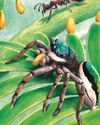
Jump Around - Bagheera Kiplingi - The acrobatic spider with a predilection for veggie food
Spiders eat flies, right? everyone knows that the 45,000 or so spiders in the world are all obligate carnivores, more or less – eating other animals, mainly invertebrates. Nature, however, loves an exception, and one particular spider missed out on that ecological memo. It goes by the wonderful scientific name of Bagheera kiplingi, and its claim to fame is that its diet is – at least mostly – vegetarian.
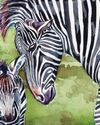
Female of the Species - Zebras - A strong sisterhood is key to staying safe
Zebras are masters of confusion. Their collective noun is ‘a dazzle’, which is fitting since their bodies and behaviour have been surprising scientists for centuries.
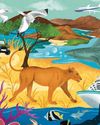
See It, Save It? - Wildlife tourism can be a powerful ally in protecting nature - but it can also harm it. We weigh up the pros and cons.
The sums of wildlife travel aren’t as simple as more tourists equals happier nature. How much did my visit really contribute to the conservation of Lady Liuwa and her habitat – and was that outweighed by carbon emissions from my flights? Did my presence disturb the animals’ natural behaviour more than it reduced the threat of poaching or benefited local communities?The question of whether wildlife travel is, on balance, good for wildlife is a complex one – and there’s no simple answer.

Can Your Really Offset Emissions? - Planning an overseas wildlife-watching trip entails facing some inconvenient truths
Imagine (or maybe you don't need to) that you hanker after the safari trip of a lifetime in sub-Saharan Africa. A 17-day tour beginning at the iconic Victoria Falls, passing through Zimbabwe, Zambia, Malawi and Tanzania, taking in some of the continent’s most wildlife-rich national parks, and ending on the lush island of Zanzibar.
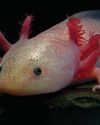
Metamorphosis: a life-changing event
WITH EVOLUTIONARY BIOLOGIST JV CHAMARY
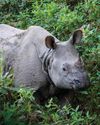
New series for BBC One: Asia
Settle in this autumn for a new natural-history extravaganza on BBC One and iPlayer: the longawaited Asia, presented by Sir David Attenborough.
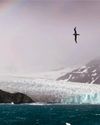
Loss of Antarctic sea ice could impact seabird food supply
Albatrosses and petrels may be forced to fly further to feed
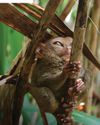
Tarsiers in trouble
Urgent action is needed to ensure survival of the Yoda-like primate

SNAP-CHAT
Chien Lee on shrew loos, rogue drones and being rained out of bed
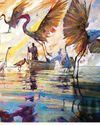
VISIONS OF NATURE
The winners of the Wildlife Artist of the Year competition 2024, from David Shepherd Wildlife Foundation